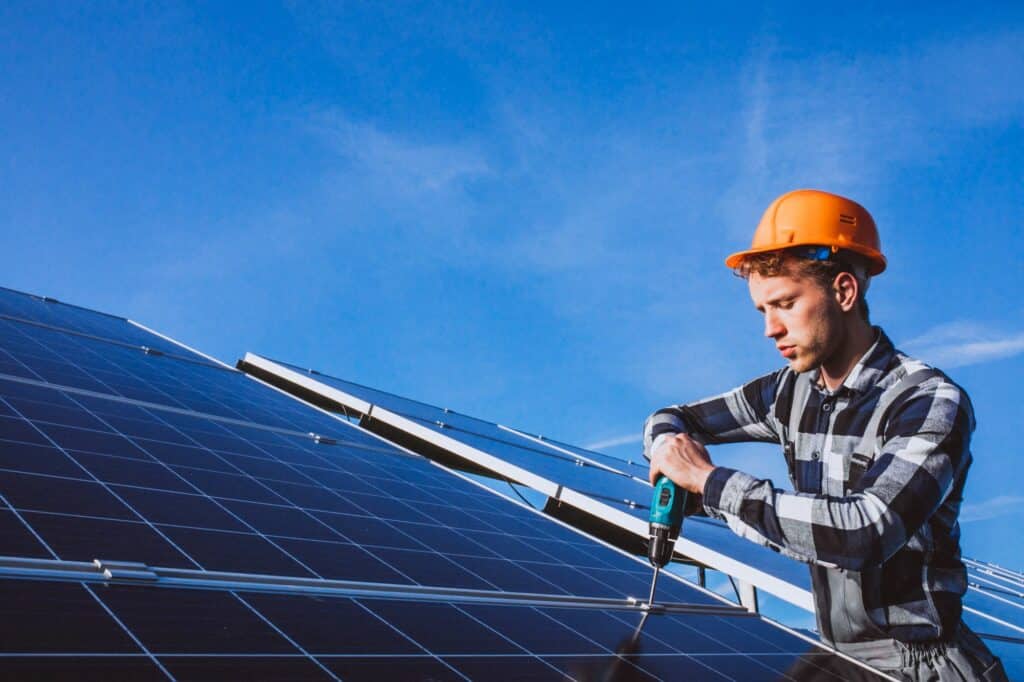Photovoltaic modules, commonly known as solar panels, constitute the electricity generator in a photovoltaic system. We distinguish between low voltage and high voltage panels. They can be combined in series and in parallel, depending on what effect we want to achieve. When connected in parallel, the current increases, so the amps, and the voltage remains unchanged, while with a serial connection, the voltage increases. Of course, in both cases we obtain a total power increase expressed in Watts.
Unfortunately, not every solar panel can be connected to every regulator and careful attention should be paid to selecting them, even if the charge regulator appears to fit the solar panel.
Solar panels and basic parameters.

Watt – is a unit of power. It determines how much energy the panel can produce at any given time. An example would be when a 100W panel works for 1 hour at full power. It should generate 100Wh of electricity, which is equivalent to operating a 100W bulb for 1 hour. Of course, this is an estimate and no losses have been considered.
Voltage – is the power component, expressed in Watts. Voltage (V) * Current (A) = Watts. Low-voltage panels offer a voltage of up to 22V, while high-voltage panels up to 60V, but the most typical voltage is 36-40V. Each solar panel has 2 values. Voltage under load and open circuit voltage. In the case of a series connection, the voltage will increase and in parallel, it will remain the same.
Current – This is expressed in amperes and is a component of the power expressed in Watts. It is assumed that the lower the current and the higher the voltage, the smaller the losses. Therefore, it is a good idea to connect solar panels in series, and not in parallel, if possible. If we have high voltage from the panels, such as 70V or 100V, we can confidently run the cable up to 20 meters without major losses. However, if the voltage is below 20V, at such a distance we can lose up to half of the energy due to the resistance of the cables.
Selection of a solar panel for a PWM controller
The PWM charge controller has two very important parameters. The first is the maximum charging current expressed in amperes. The second is the maximum voltage of the solar panels. The most common values are max 30V for a 12V battery and 50V for a 24V battery. When selecting a solar panel, the maximum values of voltage and current must not be exceeded. When connecting more than one photovoltaic module, it is recommended to connect in parallel so as to raise the current and not the voltage. It is also worth reading the manual because some manufacturers, such as Victron Energy, also limit the power of the regulator in Watts.
Selection of a solar panel for the MPPT controller
The main parameters of MPPT regulators are the maximum voltage of solar panels expressed in Volts and the maximum allowable total power of solar panels for a specific battery voltage. When connecting solar panels to the regulator with the MPPT system, we should pay attention not to exceed the maximum voltage recommended by the manufacturer when connecting the panels in series. It is best not to exceed 90% of the upper limit since, in winter,colder panels generate higher voltage. Also, the total power of the panels for a given gel battery voltage cannot be exceeded. An example is the Victron Energy 75V/10A charging regulator with a power limit of 145W. This means that the module cannot exceed a voltage of 75V ora power of more than145W.
Exceeding the voltage and current limits.
Exceeding the upper voltage in the charge regulator willactivate the protection feature which deactivates the regulator until the voltage is reduced. Unprotected cheaper units may be damaged. However, if we exceed the current or power of the panels by a small value, e.g. 10-20%, nothing bad should happen. In the worst case, the regulator will cut the excess power, but it will continue to work.
When the current or power limit is exceeded by more than 20%, the regulator will overheat and even melt. Sooner or later, exceeding the limitswill always permanently damage to the device.
Which regulator is better with the PWM or MPPT system
Without a doubt,the MPPT regulator is the better system. It allows us to charge at a level of 20-30% of the solar panel’s power on days without sun, or in shade, and even in rainy weather. Unfortunately, MPPT systems are sometimes up to twice as expensive as classic MPPT charge regulators. However, this does not mean that a PWM regulator is bad. It works as well as the MPPT regulator but only with full sun exposure. In partial or full shade, it provides only a small percent of the power of the photovoltaic module.
